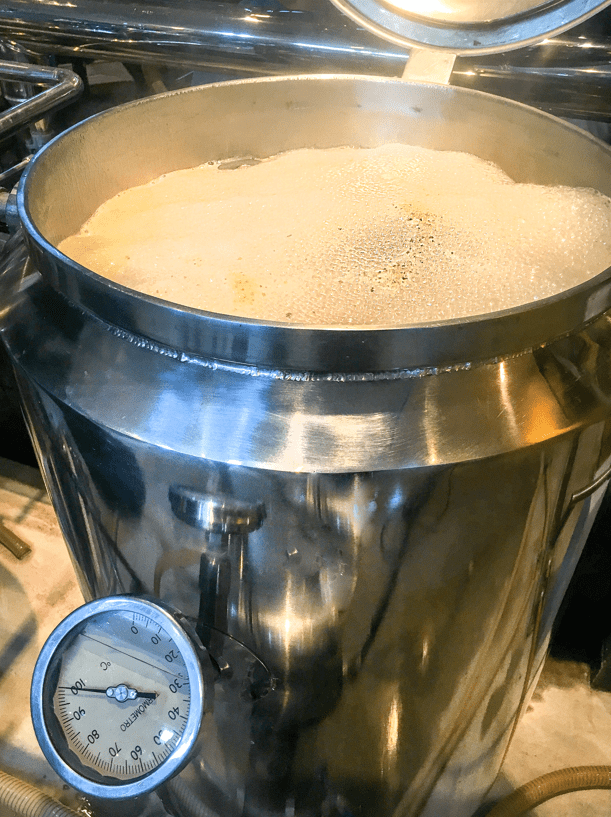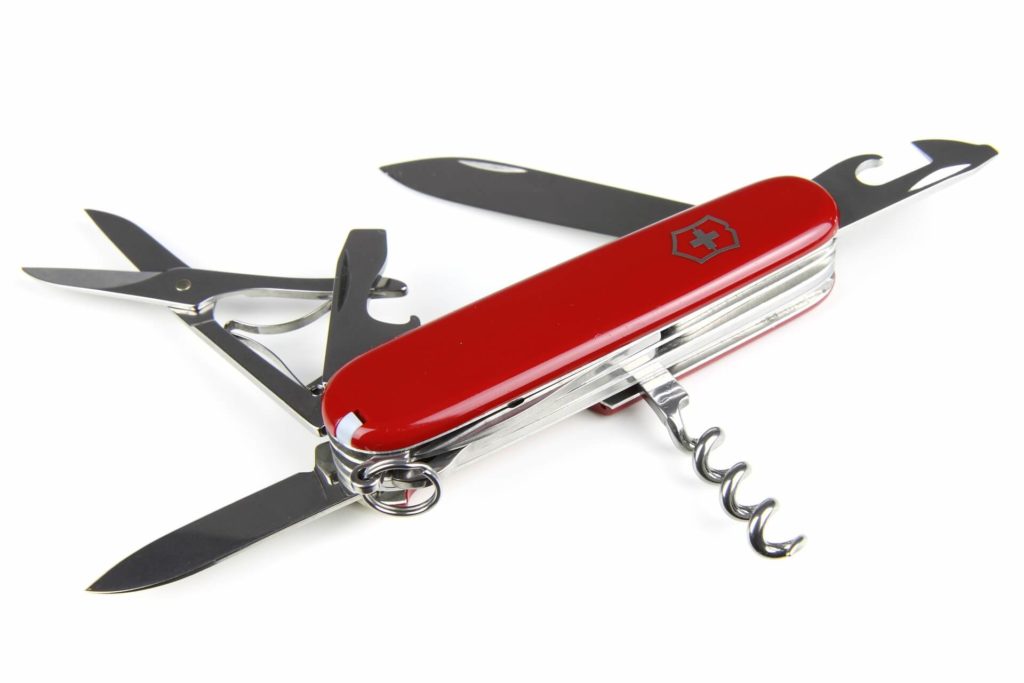Because If You Get Too Hurt, You Can’t Brew Again
“Oh shit I just sliced my hand open,” is not something your friend or significant other wants to hear during a brew day. Over my almost fifteen years of commercial and home brewing, I’ve come across more than a handful of major injuries in this hobby and the profession. Most of them were avoidable, yet they were not purely a result of carelessness nor recklessness. They are things that could’ve happened to me, if one or two minor things had lined up the wrong way. Safety isn’t a sexy word, but please take a few minutes to read this short article and it will hopefully help you to adopt a safer practice or two during your brewdays, and maybe even avoid some injuries!

Shattering Glass
For about my first decade in homebrewing I had heard the warnings about glass carboys breaking. I’d even seen the cracks forming in several of my own glass carboys. But until a few years ago, I’d never actually met anyone that had cut themselves open from a broken one. This person was carrying a glass carboy full of beer and it broke free, slicing his forearm. A lot of people just completely avoid glass carboys because of these warnings.
Nevertheless. despite the risk, glass carboys are an excellent vessel for your beer: they’re cheap, readily available, very easy to clean, and they allow you to see what is going on inside.
Some homebrewers mitigate the risk of glass by using carboy straps; they only cost about $10 and they go around the entire glass, allowing you to carry the carboy by the straps. But they’re kind of flimsy, the material has a tendency to slide around at times and even stretches out over time.
I personally think the best solution for adding a safety factor to glass carboys is a milk crate. The crate covers the entire bottom of the carboy, as well as about halfway up the side. This protects it from bumping into things on the side or placing it down too hard on a surface and breaking that way. Crates come in various sizes and you can find them for cheap at your local hardware store or on used local listings like Craigslist or Facebook Marketplace.
Lifting Hot and Heavy
This one is probably pretty silly to most of you, but plenty of beginners make this mistake, and I was one of them. My original 3-vessel gravity fed system was made with a discounted storage rack and decommissioned kegs. It was too weak at the top to hold the HLT for long periods of time. This meant the HLT had to sit about even with the mash tun for most of the time. As a result, we had to lift the HLT about five feet up in order to mash-in or sparge. I can’t stress enough how stupid this was. It was cheap and lazy and you should never put yourself in a situation where you are lifting big, heavy vessels of piping hot fluids, particularly above your heads.
On a related note, most of the all-in-one electrical systems that come with handles are not meant to lifted by those handles when filled with liquid. I’ve seen a number of posts in the Facebook groups showing broken handles and spilled beer. It would be pretty easy to burn yourself in that type of a situation too, depending on which way the handle broke. If you think you need to move a full electric vessel, especially while hot, put it on a cart with wheels, or even a crate with wheels.
Chemicals!
This is another one I hadn’t thought about too much early on. Once you have worked in a professional setting, that changes fast. Often I see people haphazardly grab cleaning chemicals and just tossing them into their carboys, sometimes while running water is filling. Sometimes even before putting water into the vessel. You should always add chemicals such as PBW to the vessel that you want to clean after you fill them with hot water. Add chemicals to water, never the other way around!
In a professional setting having an eye washing station is required, but given some of the non-professional home brew setups I see that cost well into the five figure range and sometimes even six figure range, it might be worth investing in an eye washing station in the brewhouse too. Some disposable nitrile gloves (they double as a great use for anybody that smokes meats) would be great to have on hand too, as well as one permanent set of brewing gloves, depending on the chemicals that you use and the frequency of which you brew.
This section could be quite extensive, especially if it included common professional brewhouse chemicals and their handling, but I’ll just state this: every chemical that I’ve seen has safe handling practices on the label. There are also guides available online. Some chemicals can require safety glasses or a face shield. Spend a few minutes getting to know any chemicals that you’re using in your brewhouse, even if it just saves you some eye irritation, it’s worth it, much less a nasty chemical burn.

Don’t Blow Shit Up
This may seem funny based on the title, but this actually happens. Mostly with lighting sulfur sticks and placing them into barrels. For a barrel used for wine or other non-spirits, this is actually a common method for sanitizing a barrel. However, if you do this with it could have explosive consequences and even be deadly (and it has, if you google around there are stories of accidents). Which begs the question: Why do so many websites suggest using a sulfur stick to clean a barrel? Sure, most tell you not to do it with spirits barrels, but most barrels that homebrewers use are spirits barrels!
A rather unique way to potentially blow yourself up happened to me just about a year ago. I was brewing with my buddy Nathan in his garage. Our friend David was hanging out. Nathan went to put the oxygen wand into a carboy filled with high proof spirits that had been distilled recently, in order to clean the oxygen wand out, when David yelled “Don’t do that!,” then kind of chuckled as Nathan removed the wand. High proof first run spirits + oxygen only requires a little spark to ignite, and a couple gallons of the high proof spirits is probably enough for a nasty explosion. David actually owns a local distillery, so it explains why he was on top of this seemingly obvious mistake. This may truly be a longtail risk, but as home distilling continues to grow in the homebrewing community, it’ll probably come up more frequently. On that note: water down your first spirit runs to 80 proof or lower immediately after distilling! It’s good practice.

Boil Overs
This is another one that I had experience with at an early stage of homebrewing. After a few years of brewing, I moved back into the city of Chicago and lived in an apartment. Naturally, I became a stovetop brewer. And like many stovetop brewers, I experienced several boilovers. On a homebrew scale, this usually results in annoyance: a sticky stovetop that is very difficult to clean up, especially after it dries. But on a professional level, this has resulted in very bad burns, even one local to me in Denver in recent years. And while it may be extremely unlikely on a homebrew scale to result in burns over a significant portion of the body, do you really want serious burns on even a small area of your body? Control boilovers by having properly sized boil kettles for your batch sizes and by using products such as Fermcap to prevent foam from building up.
Carbon Monoxide
This is another common risk that I’ve had some experience with. If you’re using a flame in your brewing system, make sure you are in a well ventilated space and that your burners are clean. Years ago, I brewed in the basement of a home that we rented. We had a particularly long boil that day. It was a massive Belgian strong ale that ended up clocking in at nearly 14% ABV post fermentation. During brewday, we began to feel light headed. The carbon monoxide detector on the other end of the room started going off. We quickly vented the room, instantly realizing how stupid we were to have been brewing in a closed room like that, even though it was a fairly large basement. It’s good practice to have a carbon monoxide detector around your space during brewday, you should already have at least one in your living space.

Scissors Not Knives
Canned hops are (mostly) a thing of the past, so we shouldn’t need any reminders about one of the most common ways people accidentally cut themselves (with cans). However, everything from hop products to barrel chips are packaged in plastic that sometimes needs a pair of scissors or a knife to open. And I know that many of you are good with your handy pocket knife, but please, consider going for the scissors. First, a good number of us have a beer or three while brewing, making knife wielding a little more dangerous. But also, you’re often dealing with cutting in the air, or whatever (possibly crowded) table or workbench is close by, creating uneven and unstable cuts. A good pair of scissors will be just as effective, easier to control and far less of a risk of a serious cut occurring. And this is coming from a person who as a kid would buy butterfly knives from the flea market to play with like a yo-yo!
Yes, some things (like tubing) may require a knife. It’s good to keep a knife around. But treat any such cuts with the knife as if you were preparing food in the kitchen. You wouldn’t hold an onion with one hand in the air while slicing it with a knife in the other hand, right? These sound simple, and they can be, but they’re often overlooked in the heat of the moment during a brewday. That’s when the chances of an accident increases.

Electricity
This one should need no explanation, but liquids and electricity should not mix! Be especially careful with electricity around your liquids during brewday. Most jurisdictions in the United States require a GFCI outlet within six feet of a water source (commonly in the kitchen, bathroom and outdoors). However, too many home brewers brew with all-in-one systems or other electric systems without adequate GFCI protection. If your power outlet is not on a GFCI circuit, you can buy several types of after-market protection, including GFCI replacement receptacles, GFCI extension cords, and GFCI plug adapters.
But also check your plugs, especially as your homebrewing equipment ages and wears. I’ve seen some sketchy pump cords and plugs, and homebrewers are notorious DIYers. Don’t leave standing water around, make sure both you and your plug are dry before inserting into the outlet.
Under Pressure
While the risk isn’t as bad as you might think (your corny keg won’t blow up, or at least I’ve never heard of it), the components (safety relief valve, poppets) can blow if your spunding valve clogs and doesn’t get dislodged. Depending on where you store your beer, this could be pretty bad for you. The easiest solution here is to leave about a gallon of headspace when fermenting in a keg. Another thing that can help is to run a hose from the gas line of your fermenting keg into the liquid line of a second, empty keg, filling that keg with CO2, and then letting that second keg release pressure via the spunding valve. It also doubles as a nice way to purge a secondary or serving keg.
I’m going to throw a catch-all to the end of this category though. Plastic kegs have blown up in a professional setting, resulting in multiple deaths of brewery employees over the years. I don’t know of any similar homebrewing devices, but do not try to re-use plastic kegs. And generally remain aware at all times of the PSI of the CO2 that you’re putting into vessels, along with both the maximum pressure rating for those vessels as well as their fail-safes (such as safety release valves) to ensure that you don’t end up a one as a million type casualty practicing the hobby that you love.
Other Safety Measures
Have any interesting stories or safety tips? Leave them in the comments, it’s always good to learn from each other’s mistakes. Hopefully you’ve learned from a few of my own mistakes, as well as mistakes shared with me by other brewers. Safe brewing!
